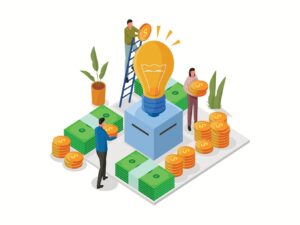This weekly quiz from YS tests your domain knowledge, business acumen, and lateral thinking skills (see the previous edition here). In this 24th edition of the quiz, we present issues tackled by real-life entrepreneurs in their startup journeys.
What would you do if you were in their shoes? At the end of the quiz, you will find out what the entrepreneurs themselves actually did. Would you do things differently?
Check out YS’s Book Review section as well, with takeaways from over 330 titles on creativity and entrepreneurship, and our weekend PhotoSparks section on creativity in the arts.
Q1: Agritech startups
Much has been written about startups that disrupt their ecosystem and remove intermediaries from the value flows. However, some startups have actually succeeded by including intermediaries, as in the case of travel booking startup redBus. How might this play out in a sector like agriculture?
Q2: Investor strategies
Good investors provide more than just funding. They invest “smart capital,” which includes domain and management expertise, industry connections, and assistance in recruiting talent. What else should investors be helping founders with?
Q3: The talent edge
A key role of leaders is to build the next rung of excellence by hiring the right talent. They should be paid well, and connected to those who drive business scale. But there is something else that leaders should do – what is that?
Q4: Failure lessons
Popular startup mantras include fail fast and fail cheaply. Failure lessons should be captured and shared for all. That may sound easy, and is actually quite tough. But there is one more problem with the way mistakes are viewed as compared to success. What is this cultural misperception?
Q5: Prototypes of products and services
Approaches like lean startup and design thinking place a strong emphasis on first understanding the problem as well as the customer’s journey and aspirations. Prototyping leads to the final solution, in an iterative manner. But innovators often get stuck at the early phase of prototyping – why is that?
Answers!
Congratulations on having come this far! But there’s more to come – answers to these five questions (below), as well as links to articles with more details on the entrepreneurs’ solutions. Happy reading, happy learning – and happy creating!
A1: Agritech startups
“The [farming] problem is so complex and market so fragmented that you need the support of the existing ecosystem. One cannot go in and just try to disrupt the existing ecosystem and be a replacement for it,” explains Nukul Upadhye, Co-founder of Bijak.
The B2B marketplace for agricultural commodities claims monthly transactions worth over Rs 300 crore, across 28 states. Rather than challenge the status quo and disintermediating the middleman, the startup has worked with them also. Read more about going beyond purely transactional relationships in this ecosystem here.
A2: Investor strategies
“Founder time is the most precious commodity in our world, and we want to be very respectful of that so we can provide teams with as much forward momentum as possible,” explains Nilesh Balakrishnan, Associate Vice President, WaterBridge Ventures.
Engaging with VCs is often a daunting and long-drawn process. “We hope to bring more transparency and decisiveness to the decision-making process,” he adds. Read more about their FastForward programme’s portfolio of nine startups here.
A3: The talent edge
“When you think about growing people, it’s not about how you get them promoted, it’s about helping them discover their strengths and investing in their growth, and that’ll help them succeed in any company,” advises Sonia Parandekar, Head of Engineering for Commerce at Atlassian.
Business leaders in positions of influence should strive to be multipliers. “Sometimes [women] want to progress but need a little guidance and encouragement. It’s so rewarding to know that you can play a role in someone’s growth,” she adds. Read more about leadership responsibilities here.
A4: Failure lessons
“Mistakes help us see things differently. However, we have to see mistakes differently first,” explains Prashant Desai, author of the book The Biography of a Failed Venture. It documents the ups and downs of his journey in founding sports brand D:FY, and its eventual demise.
“While stories of success attract, those of failures are expunged,” he laments. Denial and blame games are often the response strategy. “We are mistaken about what it means to make a mistake,” adds. Read more about his valuable learnings from failure here.
A5: Prototypes of products and services
“Never fall in love with your prototype,” explain authors Michael Lewrick, Patrick Link and Larry Leifer, in their insightful Design Thinking Playbook. After immersion in customer journeys and interviewing them, the next phase in design thinking is prototyping.
The prototype should allow users the ability to experience and evaluate the offering. “Prototypes are assumptions that must be scrutinised,” the authors affirm. A simple prototype will entail less hurt when it has to be rejected, and not being unduly attached to early prototypes helps move on to the real solution. Find more product and service tips here.
YS has also published the pocketbook ‘Proverbs and Quotes for Entrepreneurs: A World of Inspiration for Startups’ as a creative and motivational guide for innovators (downloadable as apps here: Apple, Android).




![Read more about the article [Jobs Roundup] Here’s how you can work with algorithmic ecommerce platform CommerceIQ](https://blog.digitalsevaa.com/wp-content/uploads/2021/06/people-19792611920-min-1619551220057-300x200.jpg)




